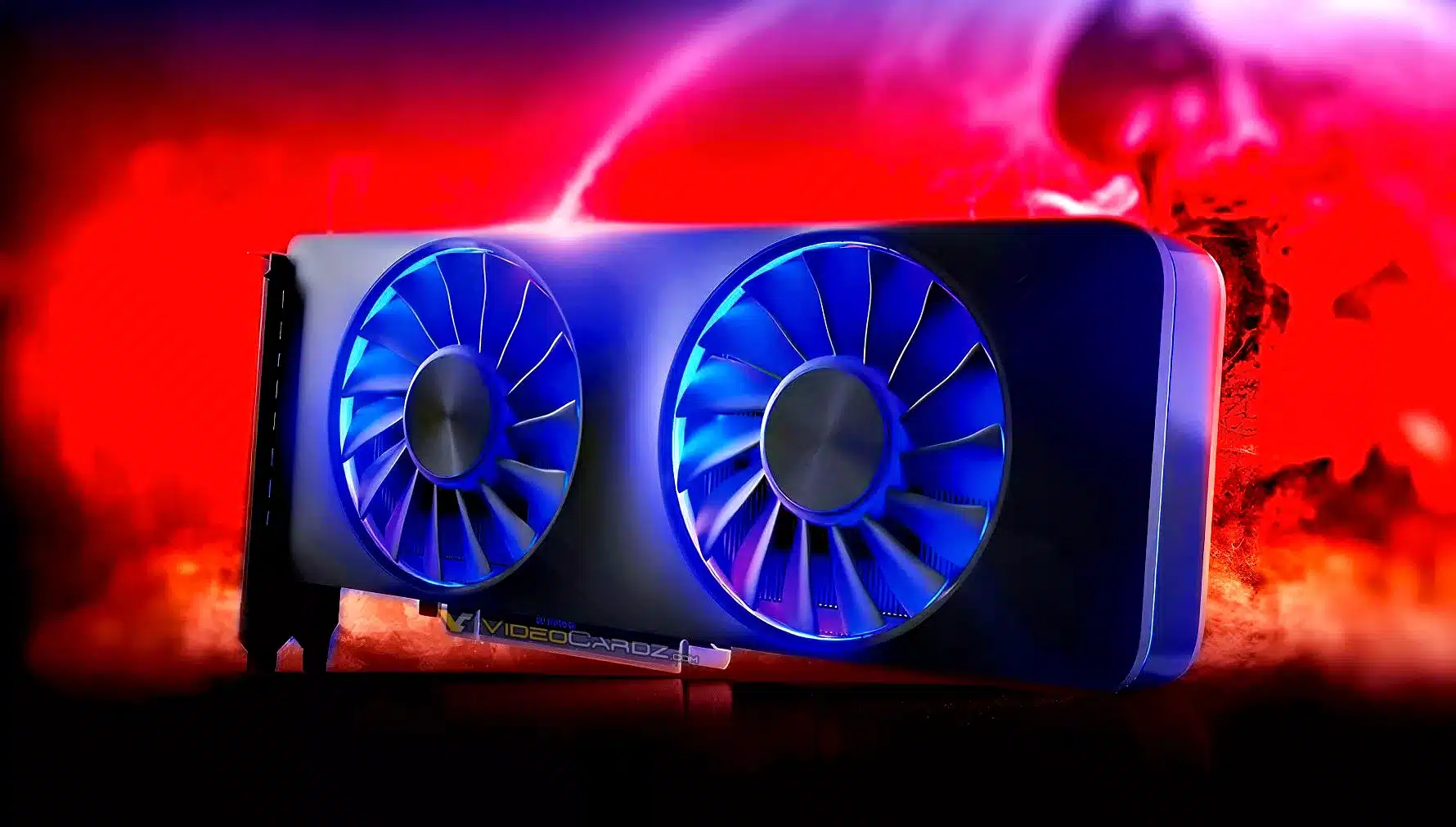Intel’s new Battlemage GPUs should be similar in performance to one of Nvidia’s current super graphics cards – if they come at all
Nvidia and AMD have already presented new GPU releases this year. Since October 2022, however, there has also been a third graphics card manufacturer to keep an eye on: After initial teething troubles, Intel is emerging as an alternative in the budget and mid-range segment.
The next wave of Intel graphics cards, dubbed “Battlemage”, was supposed to come ashore this year. The nominal flagship BMG-G10 has probably been scrapped, but two other chips are to be sold at least in small quantities.
A new leak now claims to have revealed specific details about these Battlemage GPUs from Intel.
In a nutshell
- Intel’s new Battlemage GPUs should be positioned between the RTX 3070 and RTX 4070 Super
- 30 percent faster “Execution Units” lead to a doubling of performance
- The supposed release in Q4 could be too late to compete with current Nvidia and AMD GPUs
Intel Battlemage: As good as RTX 4070 Super?
This is what the leak claims: The preliminary information comes from the YouTube channel “Moore’s Law is Dead”, according to which the first Battlemage GPUs are planned for the fourth quarter of 2024.
Intel is said to be abandoning dedicated laptop GPUs due to technical difficulties, but at least parts of the desktop division will remain unaffected.
These parts are the G21
and G31
baptized chips that are intended for Battlemage – the latter would be the new flagship model in this sense.
The G31 chip itself is manufactured in TSMC’s 5 nm process and, like the previous flagship Arc A770, has up to 512 EUs. On the memory side, 16 GB of 256-bit VRAM is said to be available; however, it is unclear whether this is GDDR6 or GDDR6X.
A second Intel graphics card with this G31 chip is said to be based on 448 EUs, although the memory configuration remains unaffected. According to the slides, there are also indications of a variant with 384 EUs, but this will probably not come onto the market
The G21 chip, on the other hand, which will probably be used for Battlemage’s entry-level GPUs, works with either 256 or 320 execution units.
Variations are also planned for the memory, with a choice of 8, 10 or 12 GB of VRAM with a 192-bit interface. However, production will remain with TSMC’s regular 5 nm process
What does this mean for performance?
As the YouTuber explains, the “Execution Units” (EU) of the new Battlemage chips should be around 30 percent faster than their direct predecessors.
According to MLID, this in turn means a doubling of performance. This would place the best of the new Battlemage GPUs between Nvidia’s RTX 3070 and 4070 Super.
According to him, this data is based on “non-ideal tests with Lunar Lake” and should therefore be treated with caution. Lunar Lake is about upcoming, particularly energy-saving CPUs.
This caution has precedent, as the previous ACM chips in the Alchemist series, such as the Arc A770, were originally seen as direct competition with the RTX 3070 Ti – a lofty goal that ultimately could not be fulfilled,
Thinking outside the box
In principle, Intel does not specify any performance targets for the next generation of graphics cards, which according to MLID allows for two possible scenarios
Either Intel engineers have too many reservations to make big promises based on the experience of the past few months – or Battlemage is still a mystery for Intel too and they don’t know what performance is actually possible.
The company has already shown several times within the Alchemist series that large performance leaps are possible with improved drivers in certain games after the release, as the article linked below also makes clear.
In the end, however, it is even unclear whether Intel has any plans to release Battlemage at all. According to MLID, it is also conceivable that they will concentrate on the subsequent generations “Celestial” and “Druid” instead and take a break for the time being.
Difficult release issues
The worries surrounding Intel Battlemage are unlikely to diminish in the short term, as the rumored release period in the fourth quarter of 2024 poses yet another potential dilemma
If this release period is confirmed, Intel Battlemage would no longer be able to compete against Nvidia RTX 4000 and AMD RX 7000.
Instead, the new Arc GPUs would have to fight with their respective successors in the form of the RX 8000 and RTX 5000 – and Intel would be too late for the planned competition with the RTX 4070 Super.
Whether AMD and Nvidia will launch new GPU generations this year remains to be seen, as does the exact nature of Intel’s Battlemage GPUs.
What do you think? Can Intel become a real competitor to Nvidia and AMD with the new Battlemage graphics cards or are the two manufacturers still too far away? Have you already had any experience with Intel GPUs? Let us know in the comments below:


